A Photo Journey of Our March Trip (I)
18 days and 6 places - Part I: Ningbo and Wuyuan
March is when everything starts to warm up to spring. This spring, both my husband and I are celebrating our milestone birthdays, so we thought the best birthday present we could give to ourselves would be a memorable birthday trip. We decided to go back to China and visit parts of the country neither of us had visited before, the parts with special meanings to us.
In 18 days, we traveled by planes, high-speed trains, and cars. We traveled to six different cities/towns. We were impressed, moved, and surprised by the places we visited and the people we met. The experiences enlightened us as well as made us ponder; they brought us epiphanies as well as reflections. There is so much I want to write, but every time I sit down in front of my computer, I can’t seem to bring what I want to write about to the foreground; every time I start to search for some basic background information, it leads me to more research and more reading and thinking.
So, I decided to give writing the time it needs, and instead, I will first tell you all about my journey through the lens of my phone camera. Since many of you will be reading this newsletter via email and with the number of photos I want to share, I will send this photo journey in three parts. (Depending on your email provider, you may still want to read this newsletter via a browser or the Substack App.)
I hope you like this photo journey of our March trip!
宁波 Ningbo
Ningbo, a city in Zhejiang Province about 130 miles south of Shanghai, has a history dating back more than 2000 years as an ancient trading port on the Maritime Silk Road. Today, Ningbo is home to the busiest cargo and largest fishing ports in China, as well as an industry hub and national Hi-Tech Development Zone.
Ningbo was also home to my maternal grandfather, A-Gong, who was born in a fishing village and raised in an orphanage.
Tianyi Ge, or 天一阁 Tianyi Pavilion, the oldest surviving private library in China (established in 1561 during the Ming Dynasty), is home to many ancient manuscripts. It hosts not just rare books, calligraphy, and paintings but also Ming-period architecture, stelae, gardens, and a Majong Museum. Even its public restroom showcases time and artistry (photo 6 below).
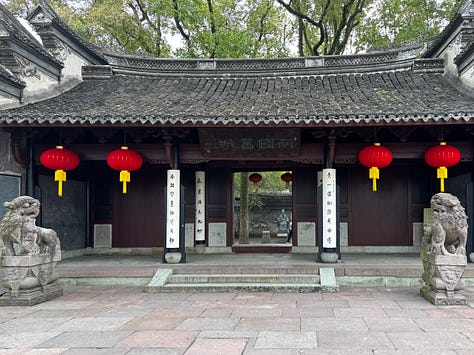
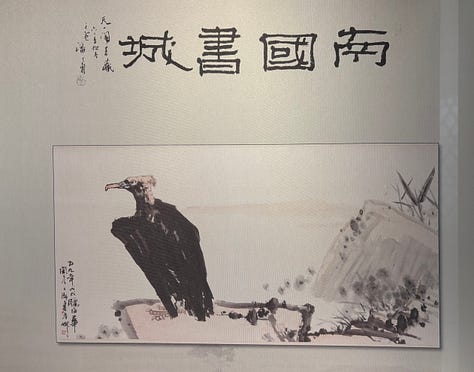
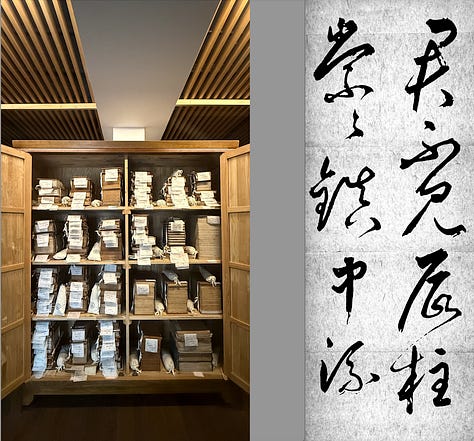
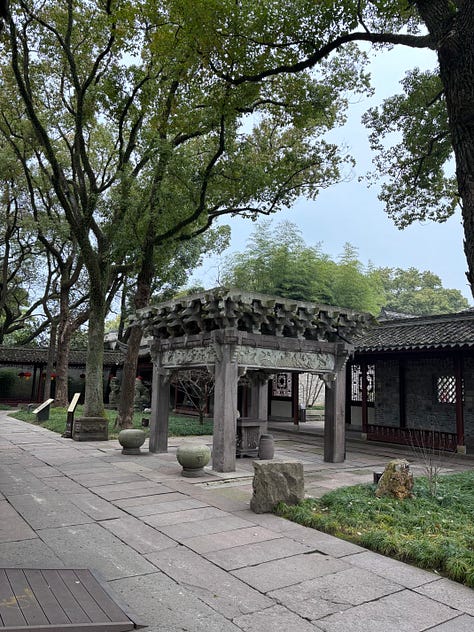
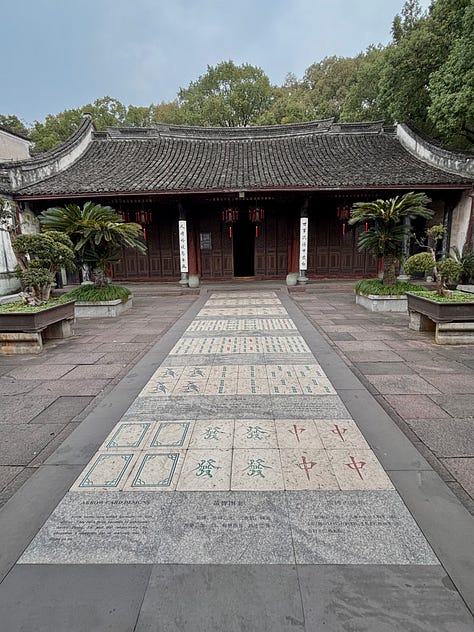
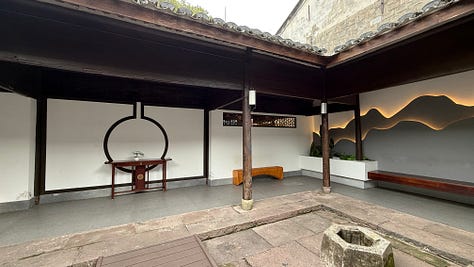
Dongqian Lake 东钱湖, is the largest natural freshwater lake in the province of Zhejiang, three times its much more famous sister West Lake 西湖 of Hangzhou.
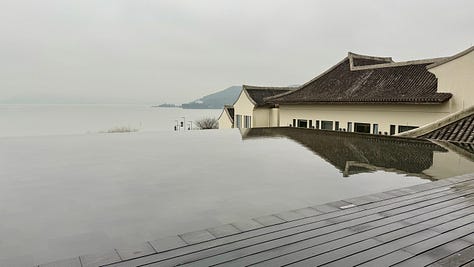
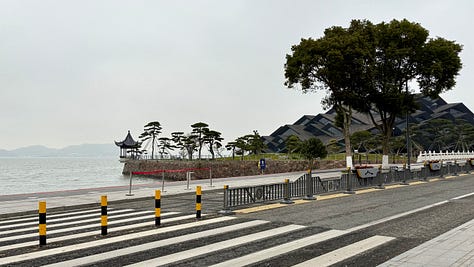
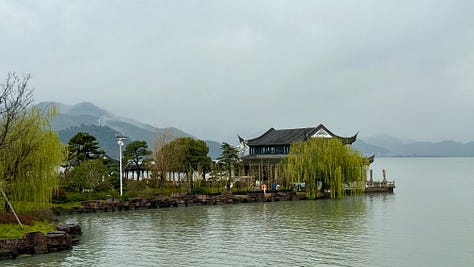
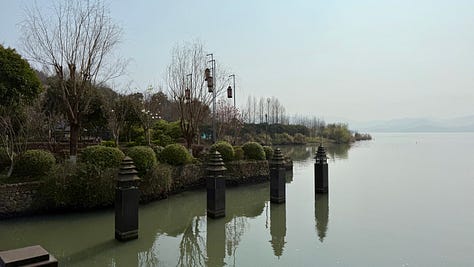
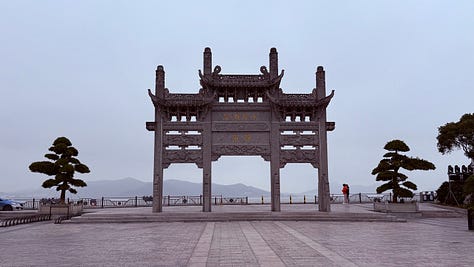
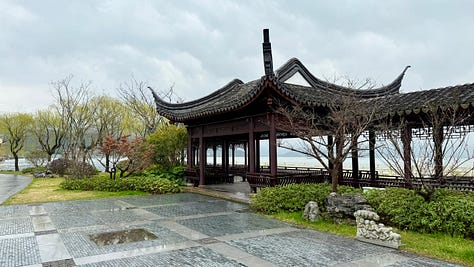
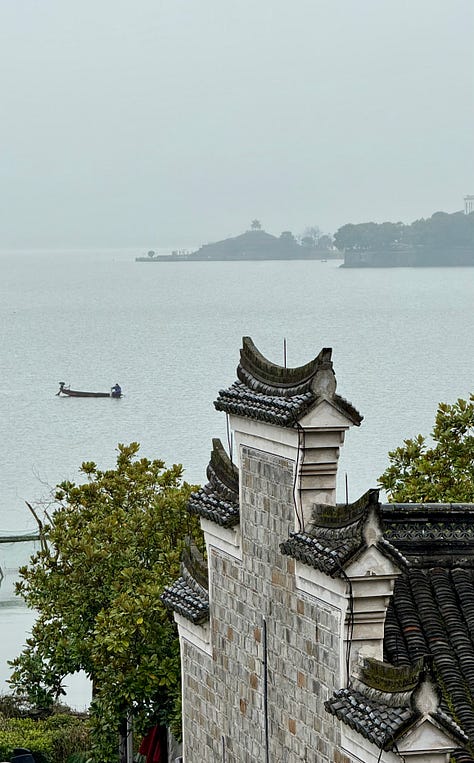
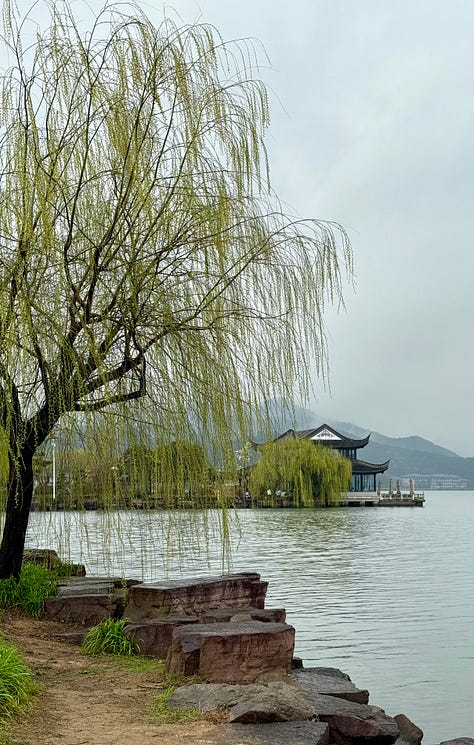
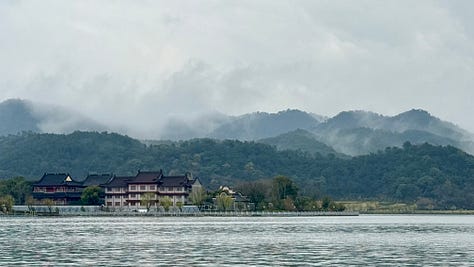
Xiangshan (Elephant Mountain) 象山. We came to Ningbo for its fishing villages and fresh seafood (that makes Ningbo cuisine famous), and we were not disappointed. The Shipu port 石埔 was quiet in the afternoon, the fishing fleets had long returned to their dock and offloaded their haul of the day, and the market had closed. But not the restaurants in downtown Ningbo—all of them showcased the abundance of locally sourced seafood.
Note: The Chinese government has a fishing ban to protect marine resources and allow fish stocks to recover during crucial spawning and growth periods. During this annual "summer fishing moratorium" (approximately from May to September; actual dates vary from year to year), commercial fishing activities are prohibited in the waters around Ningbo and throughout much of the East China Sea. Knowing this made me enjoy my seafood with so much more comfort and ease.
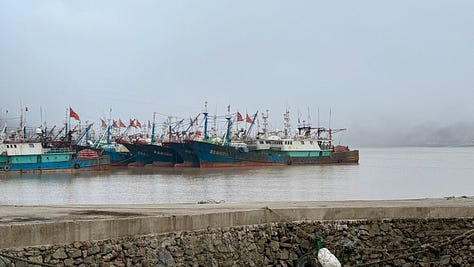
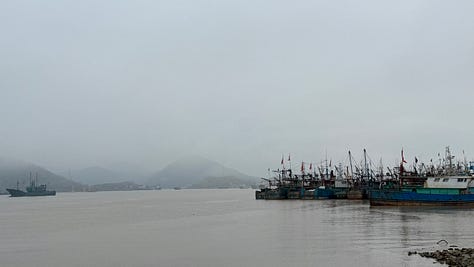
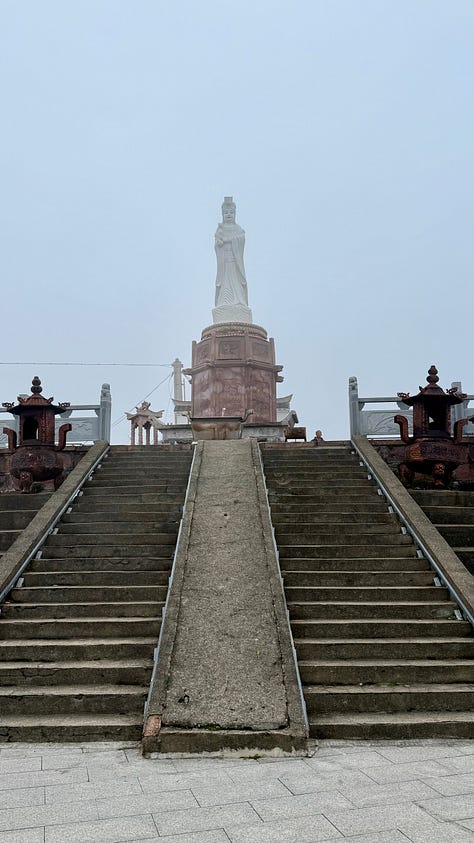
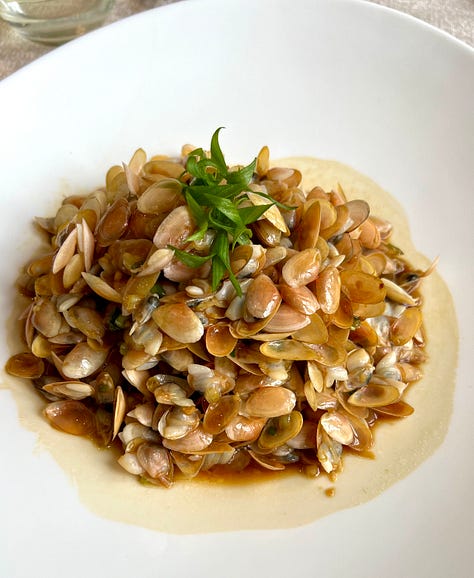
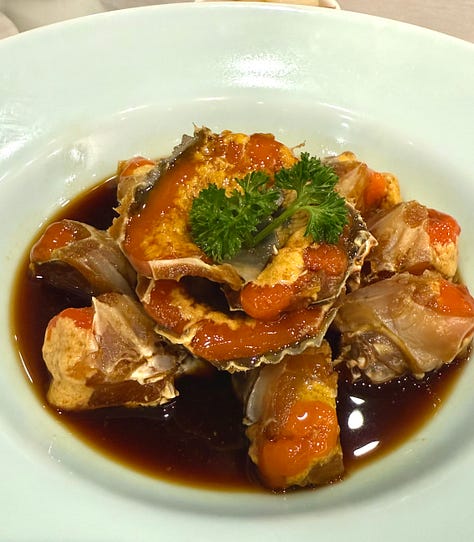
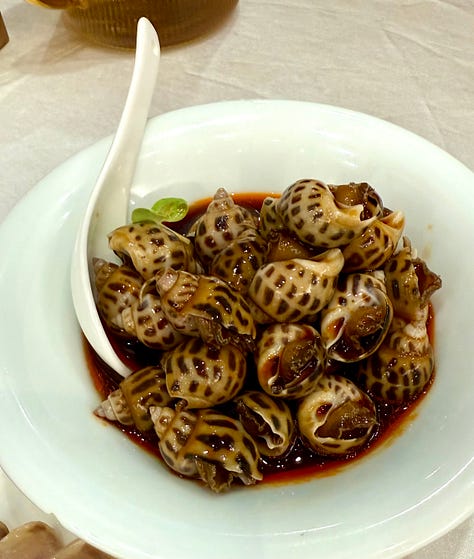
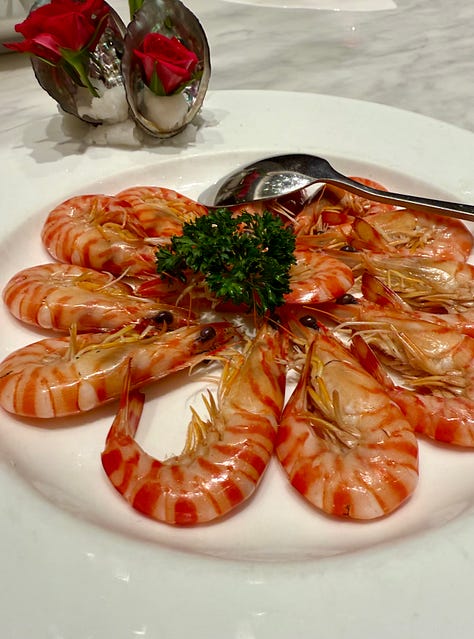
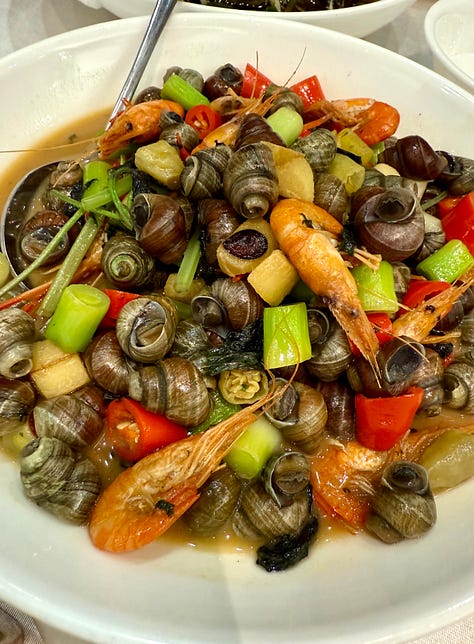
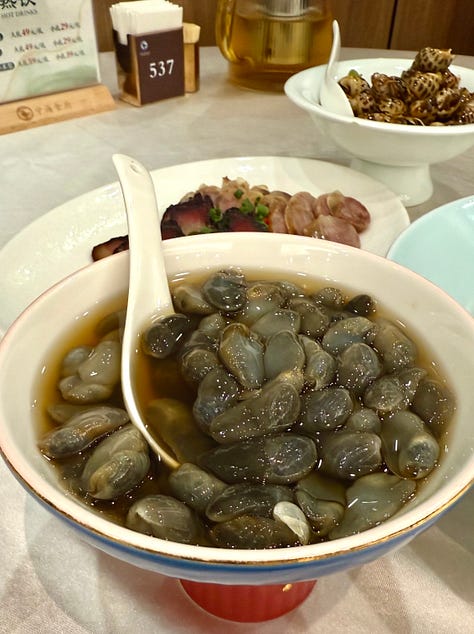
婺源 Wuyuan
Wuyuan is a county in northeastern Jiangxi province, bordering the provinces of Zhejiang to the east and Anhui (where we were heading next) to the north. Jiangxi province is the ancestral home on my husband’s paternal side, and as someone who was born in Taiwan, he had never set foot in Jiangxi before this trip.
Wuyuan is home to some of the best-preserved ancient architecture in China—dating back to the Tang Dynasty in the eighth Century—protected by its remoteness and inconvenient transportation.
Well, at least that was true for over a thousand years until … it was not.
Huangling Village 篁岭. When we arrived at this aged village nestled in rapeseed paddy fields, described by the travel industry as China’s most beautiful village, we had expected to experience the raw and ancient village living experience, only to realize that the native village residents had all moved out, the courtyards had been updated behind its ancient-looking facade and turned into Airbnb-style accommodations, and its priced natural scenery and the Ming-period village had become a viral spot for social network influencers and tourists.
It was an annoying disappointment. But the spirit of the place refused to let us down. It pierced through the modern crowds and their shallowness, bringing back a haunting beauty of the ancient time underneath the bright yellow of the rape seed flowers and the weathered black of aged tiled roofs.
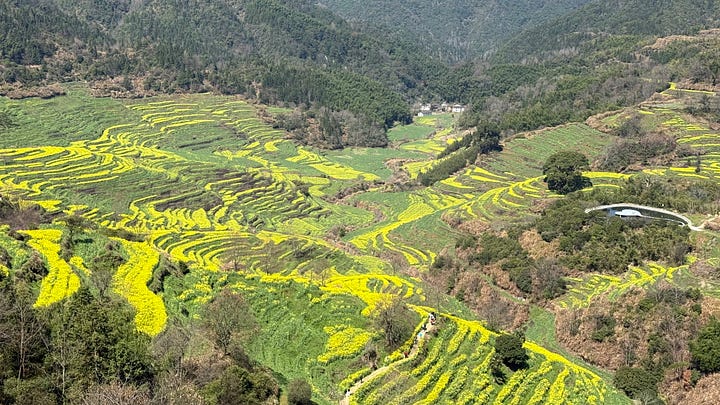
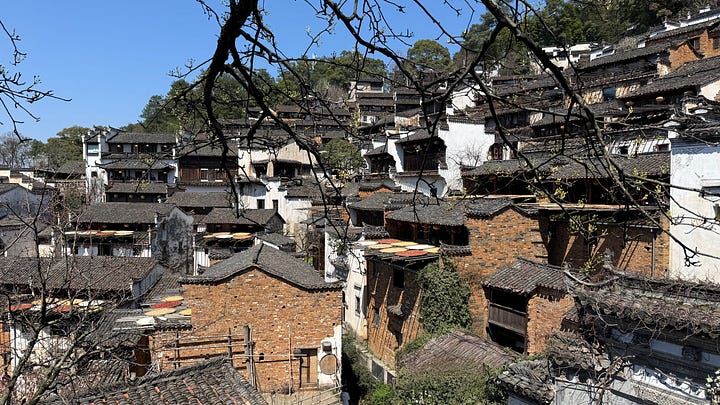
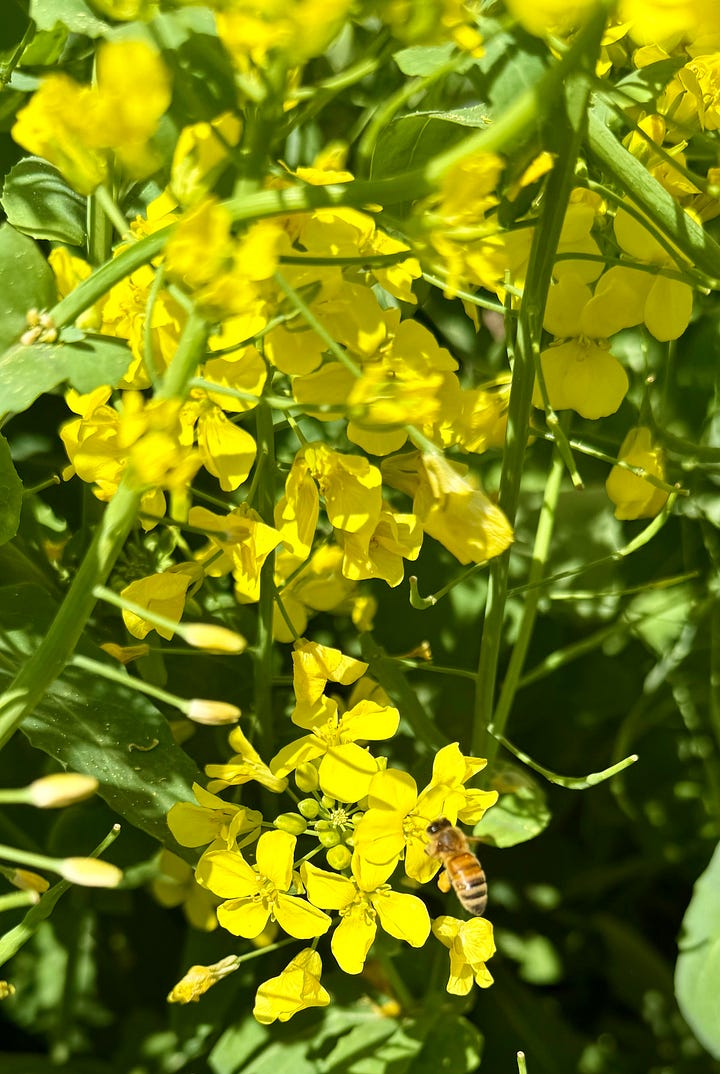

Seasonal wild greens 野菜, the stars of the local cuisine. We ordered dinner in the morning, so what was growing in the field could become the dinner dishes on the same day. “Picked to order” - the ingredients couldn’t get any fresher, and the food couldn’t get any more satisfying.
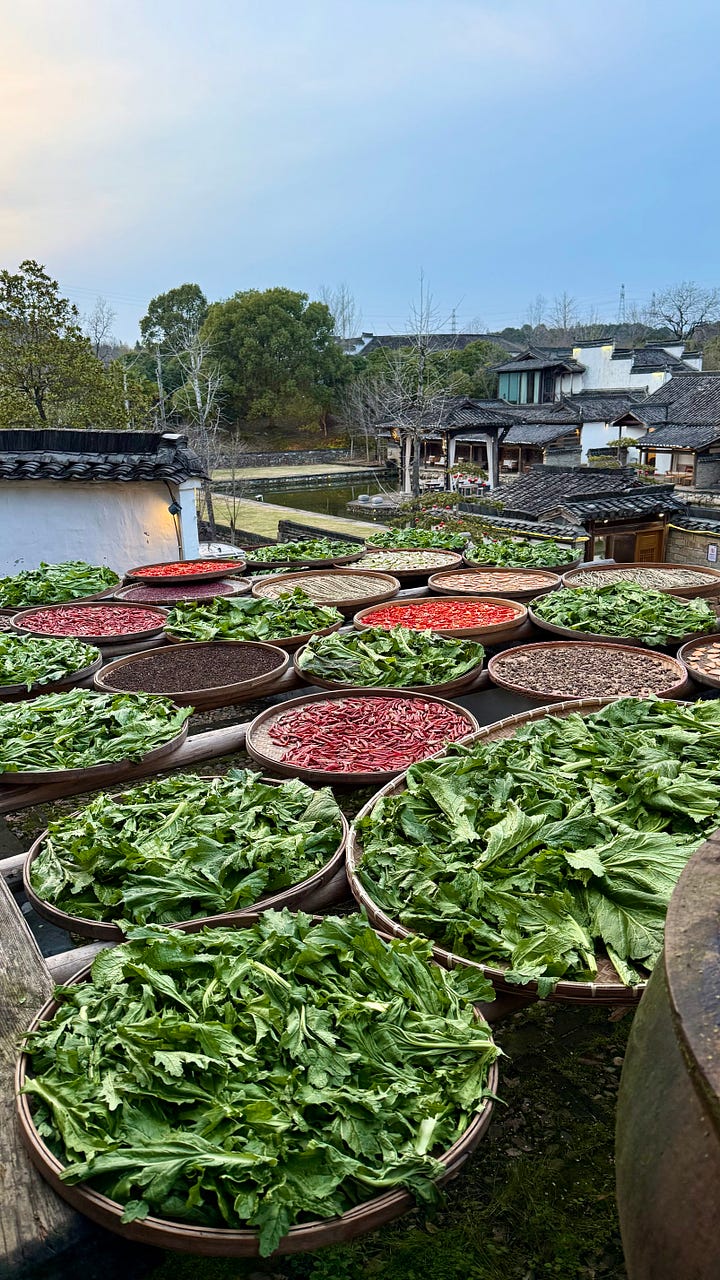
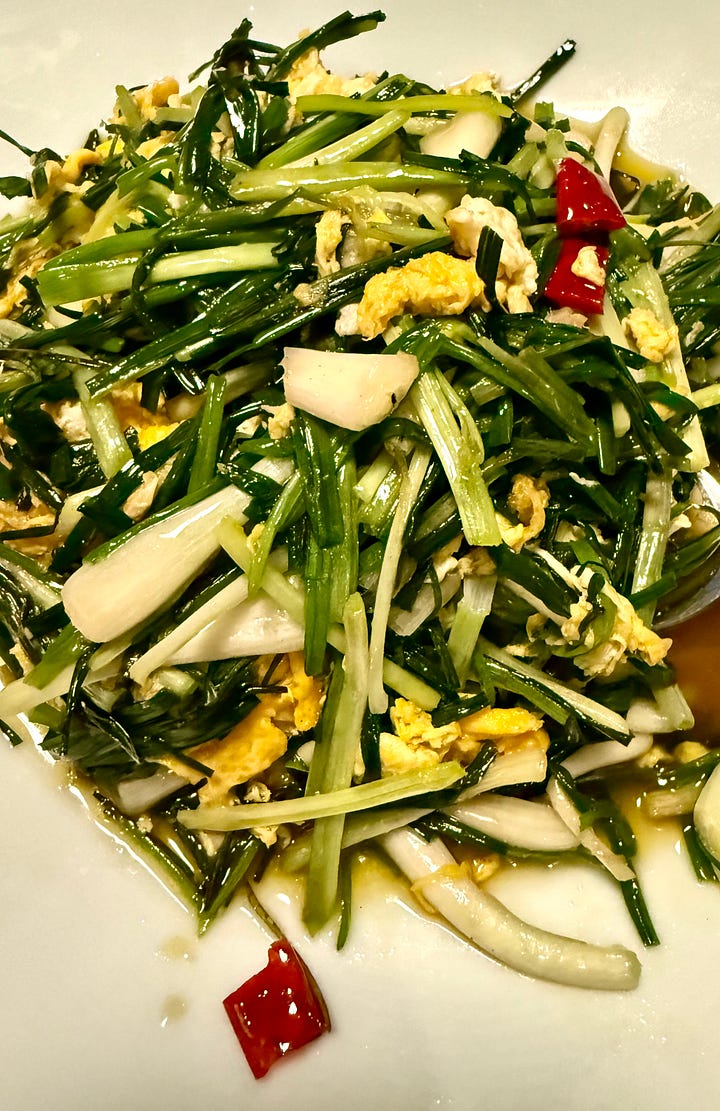
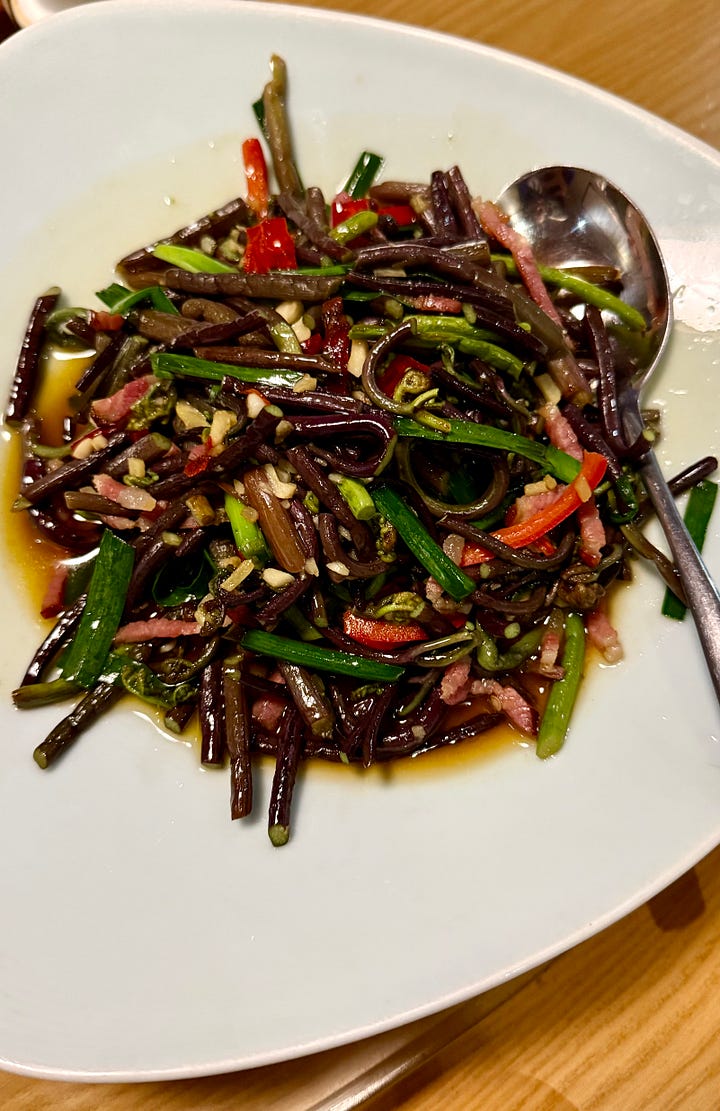
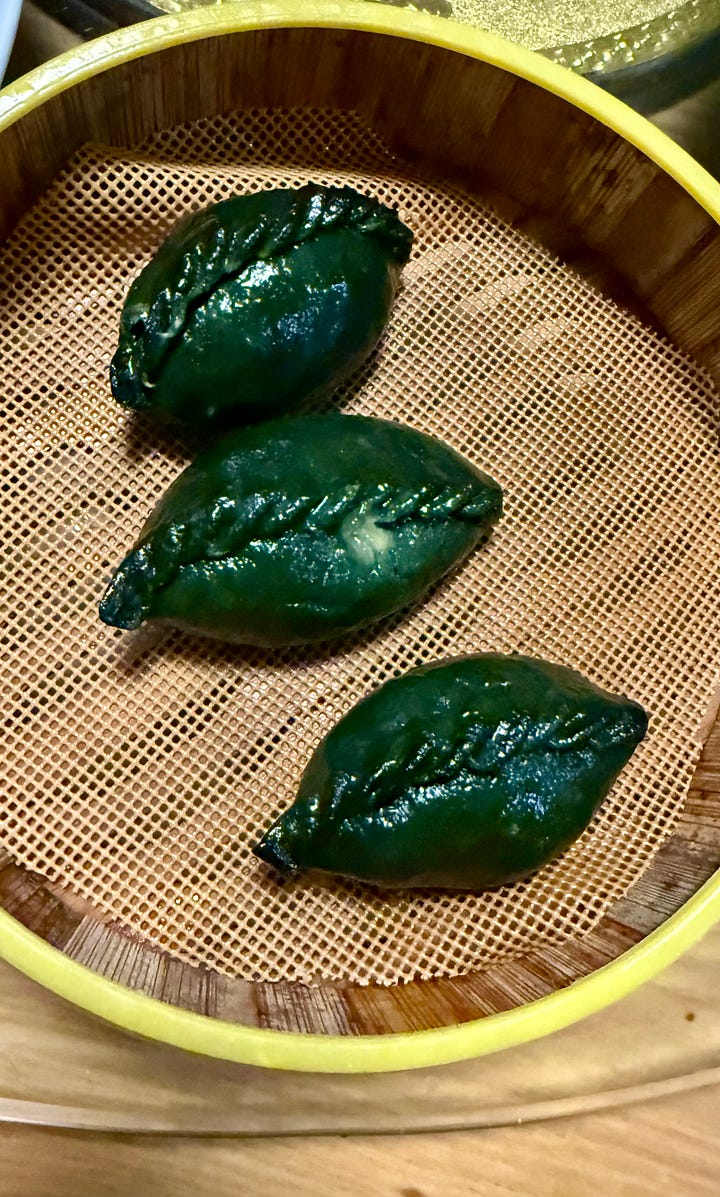
Accommodations in an ancient town. Like almost anywhere in China, there were so many hotel chains and private residences for rent in and around Wuyuan. We picked 阅徽堂—a modern resort built to mimic the famous Hui Style architecture 徽派建筑 (more on that in the next newsletter)—to stay, and 厚塘庄园—a 600-year-old Confucian school 私塾 relocated to become a modern-day resort plus organic farm plus private school for children—to dine.
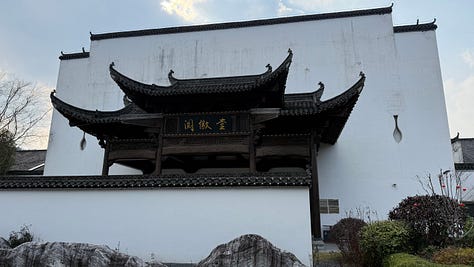

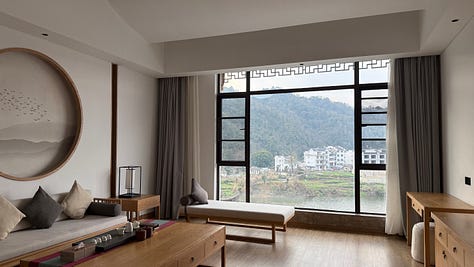
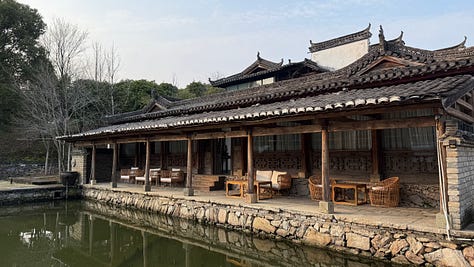
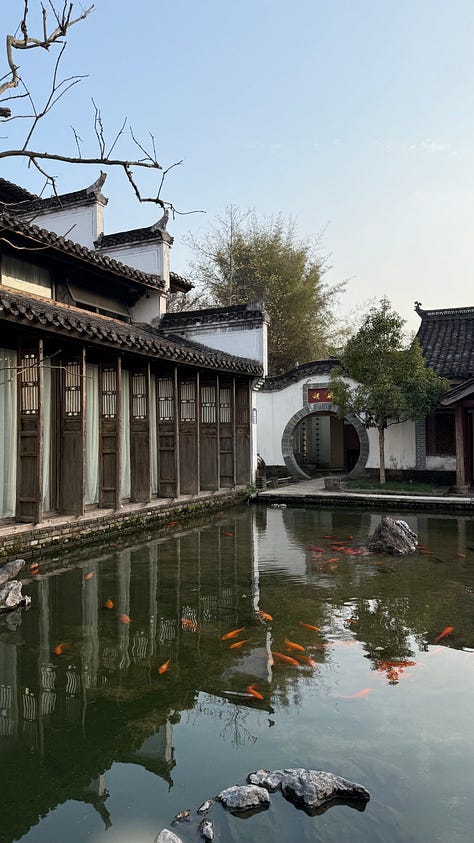
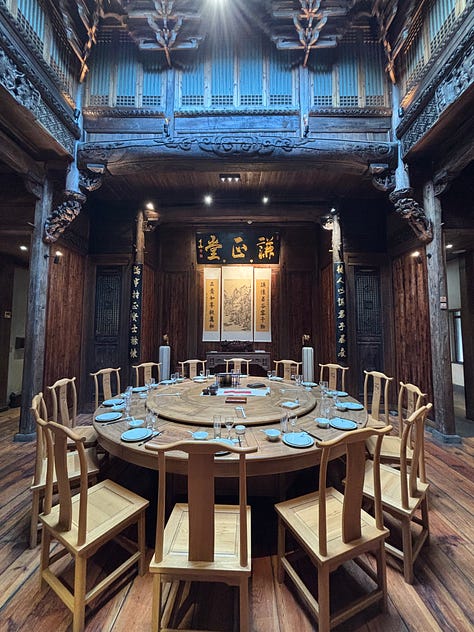
(Read Part II here.)
Like what you read? Click the ❤️ below, share, and subscribe to receive future newsletters.
You can read other posts directly on the Website.






Wow! I would absolutely love to visit China -- with a Chinese-speaking guide who appreciates the various cultures we'd dip our toes into. A year in just one of these places would not be enough.
WOW, Yi, so much to love in this post! Thanks for sharing these gorgeous images and some of the history. You could be the kind of wonderful guide to the region that some of the other commenters talked about... maybe your third career??